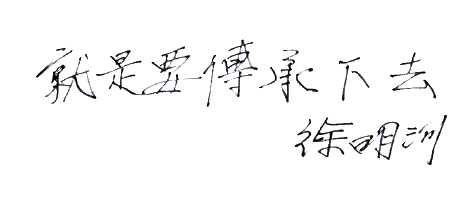廟宇美學經典 ─ 徐明河
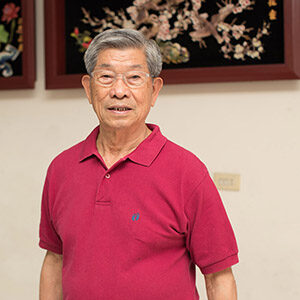
Classical Aesthetics of Temples
Hsu, Ming-He
Temples are the centers of religious beliefs, while serving the functions of blessing and civilizing. The architectural style features solemnity, divinity and luxury. Therefore, it traditionally encompasses 5 elements-stone sculpture, wood sculpture, Koji pottery, Jiannian (ceramics cutting and pasting art), and painting. During the period when a large number of temples were built in Taiwan, the cost of Koji Pottery was so high that the relatively low-priced Jiannian became popular and has contributed to the aesthetics of temples ever since. Hsu has witnessed the history of Jiannian in Taiwan from the period of his apprenticeship to professor-level craftsmanship, from his work of restoring common shrines to historic temples.
In 2015, the Department of Cultural Affairs of Taoyuan City Government registered Hsu as a cultural heritage of "Traditional Craft – Preserver of Jiannian techniques." The reasons offer a vivid description of his lifetime contribution:
First, artistry. His extensive experience and superb skills in Jiannian and Koji Pottery breathes life into ceramic figures, high in art values.
Second, scarcity. Hsu has perfected the crafts of Jiannian, drawing upon the essence of traditional working process, engineering and methods.
Third, authenticity. Being the successor of master, Hung, Kun-Fu and inheriting the techniques of Master Yao, Tzu-Lai, Hsu’s artworks could be found in major temples.
Fourth, mastery and embodiment. The preserver not only engages in creating works of art but teaches in university to pass down artistic skills, contributing much to the preservation of traditional crafts.
寺廟是信仰中心,兼具庇佑與教化功能,建築講究莊嚴神聖、堂皇富麗,因此有「石雕、木雕、交趾、剪粘、彩繪」五步齊全的傳統。臺灣廣興廟宇的時期,因交通不便,加上燒窯失敗率高,以致交趾陶成本高昂,相對低廉的剪粘因而興起,造就廟宇美學。徐明河從早年的學徒到大學教授級專業技術人員,從一般宮廟到古蹟級的寺廟修復,見證臺灣的剪黏史。
名師慧眼識高徒
徐明河國小畢業後,在西點麵包店當了半年學徒,再到臺北凃全福腎臟專科當學徒,主要是切中藥材。「父親說,就算學成,家裡沒錢讓我開業,建議我轉行學西醫的注射。我國小畢業就沒再升學,西藥的英文看不懂,怎麼學?有一次跟同事葉信雄到萬華集義宮看姚自來做剪黏,那時是臺灣剪黏第一次用玻璃取代瓷碗做剪黏,我當場說為避免被玻璃刺到,黏貼的工序應該要怎樣。姚師見我一看就懂,鼓勵我來學,一個禮拜後,姚師就拿契約書要我簽。一切都是緣份啦。」徐明河珍藏的契約書雖已泛黃,但往事鮮明如昨。
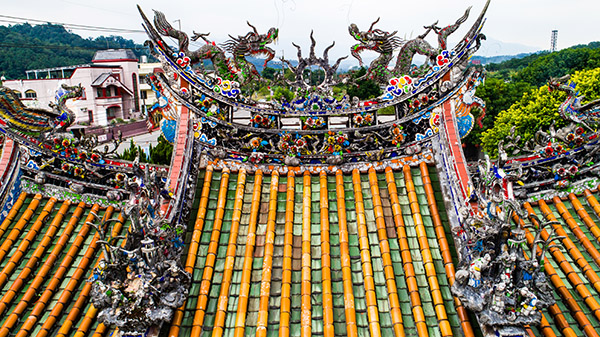
徐明河的剪黏風華--橫山太平地三元宮屋頂
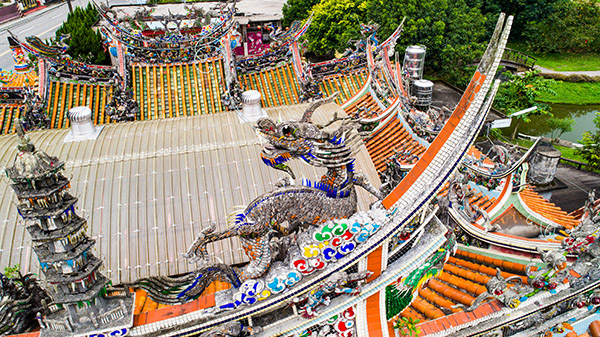
剪黏一般可維持三四十年
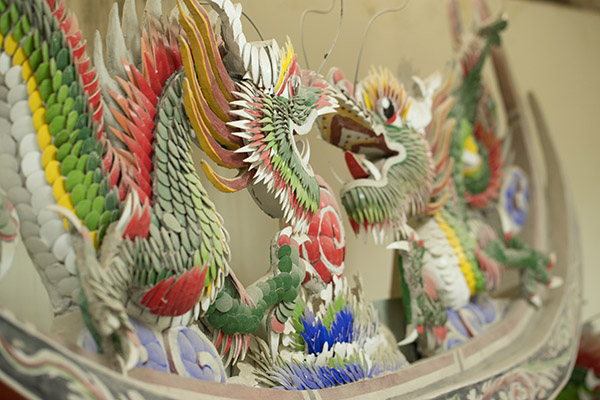
剪黏的細節
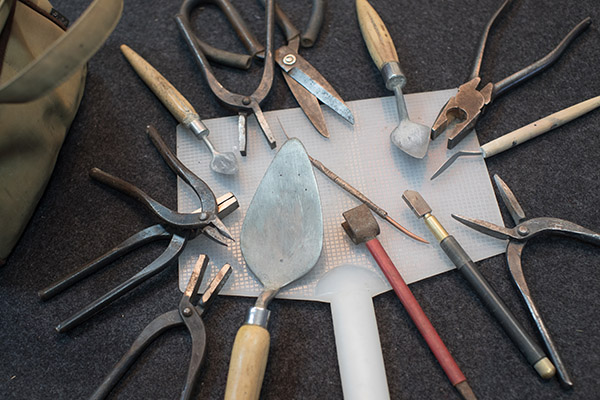
跟著徐明河一輩子的剪黏工具
師徒緣,一生情
畫花草是剪黏的一部份,徐明河晚上常拿水泥袋包裝當紙,再買一瓶便宜墨汁,就一筆一筆的勤練不已。為練習剪黏和交趾陶的基礎泥塑,他也利用晚上,取一塊灰泥,做了打掉再做,一再重覆。姚師知道這徒弟練夜功後,會時不時的進來指點。如此苦學勤練,一兩年後徐明河就上場擔綱了。「感謝師父給我機會,在學徒階段就讓我獨當一面。做中學,是最好的磨練和成長。三年四個月期滿,師父還特別帶我去旅遊,到嘉義北港朝天宮觀摩。」當年姚師的眾多徒弟裡,也只有徐明河有「畢業旅行」,可見姚師對他的賞識。這師徒情一路相續,民國93年原擔任臺灣藝術大學古蹟藝術修護學系「教授級專業技術人員」的姚師,推薦得意弟子徐明河接棒,迄今任教已滿十四載,進入第十五年。
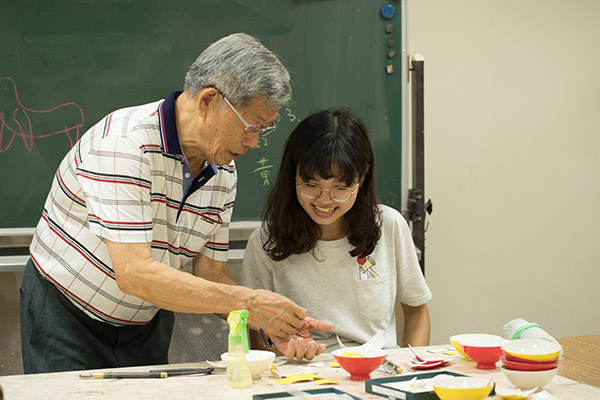
在臺藝大古蹟藝術修護學系的授課情景
榮列文化資產
徐明河也擅交趾陶,但投入剪黏畢竟已達六十年,剪粘成就非凡。桃園市政府於民國104年以桃園市文化局登錄文化資產「傳統工藝–剪黏技術保存者」,登錄理由為徐明河畢生貢獻做了生動寫照。
一、具備藝術性:精煉純熟的剪黏、交趾陶技藝,作品栩栩 如生,維妙維肖,深具藝術性。
二、具備特殊性:剪黏技藝精湛,工序、工法、工科均得傳 統之功力。
三、具備地方性:得洪坤福一脈,承姚自來師之真傳,重要 廟宇皆有其作品。
四、精通並能體現該項傳統藝術:保存者不僅仍從事創作並 於大學授課傳承,對保存 傳統工藝甚有貢獻。
